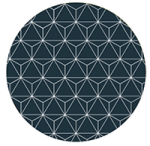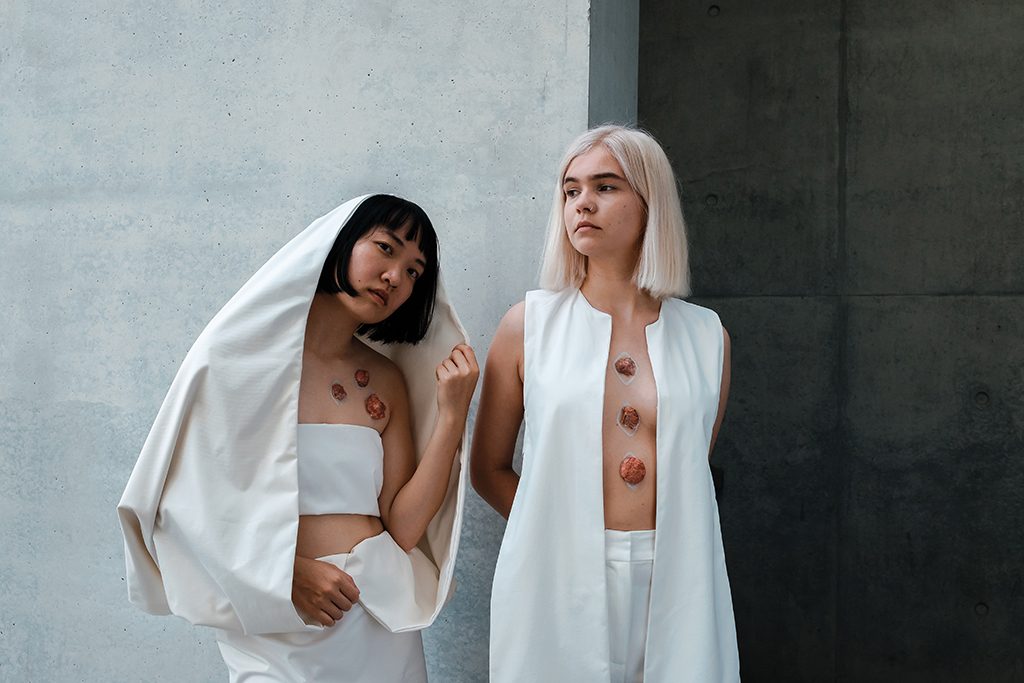Award 2021
Welcome to the Social Art Award 2021 – Online Gallery!
We are grateful for the many inspiring contributions from artists around the world. The selected works reflect a broad spectrum of contemporary social art practices and explore new relationships between humans, nature, and technology. They address themes such as ecological regeneration, climate justice, sustainable futures, social resilience, and more-than-human perspectives.
Below you will find the submissions from the Social Art Award 2021 – New Greening edition that passed the initial jury round. The Online Gallery offers public visibility to these works and encourages dialogue around their ideas and approaches; it does not replace the final jury decision.
Thank you to all artists for sharing your visionary and committed work. We invite you to explore the gallery and engage with the perspectives shaping New Greening.
Neoplasia
Julia Rhein Ony Yan Maya Eckhardt
Neoplasia is a speculative design concept envisioning a possible future in which the solution to a more sustainable lifestyle is found in the return to a natural resource that is vastly available: The human body itself. The scenario Environmental disasters and the careless use of resources have scarred the planet and led to a permanent crisis mode, which has resulted in the extinction of flora and fauna. In our scenario, the scarcity of resources, artificial intelligence and highly developed technologies form the social framework and have replaced humans as a workforce. Under these conditions, mankind must redefine its role. The human body as organic matter Similar to factory farming and monoculture, the idea to place humans permanently under passive productivity and regard their bodies as a source of nutrition is being developed. Why Neoplasia? Neoplasia describes a process of uncontrolled cell growth. A subform of neoplasia are keloids, which are characterized by the fact that scar tissue grows uncontrolled and cannot be removed without surgery. On the basis of this medical phenomenon we started to wonder: What if humans would cultivate the growth of keloids and turn it into a delicacy, forming a new culture in between body awareness and self- exploitation? From random growth to targeted cultivation In today‘s society, neoplasms are merely an unwanted by-product of misguided wound healing. For our scenario, therefore, concrete circumstances must be created that make the targeted cultivation of neoplasms possible. How can growth be specifically provoked or guaranteed? The device The device combines the functions of „sowing, maintaining and harvesting“ and is therefore worn permanently on the body. The pointed spikes are deeply anchored into the skin and thus create the start for the growth of the neoplasms (sowing). Through the Push-to-Plow concept, the spikes are then pressed apart. As a result of the interaction, a wound gets created, that stretches further and further apart (maintaining). Due to the permanent tension, neoplasms develop through scarring and continue to grow. When the desired growth size is reached, the device is pressed together at the opposite corners, whereupon the sharp edges on the inside cut off the neoplasm (harvesting). Collective neoplasia Due to the high level of social recognition, wearers want to display their neoplasms in public. Thus they are worn on the body like jewelry. This has also impacted fashion: Garments with large cut-outs proudly expose the modified body parts. The public presentation and recognition of the harm one does to his or her body evokes a strong feeling of solidarity. Mutual curiosity and appreciation between the wearers create a collective spirit. The highest form of neoplastic connectedness is the mutual attachment of neoplasms. Here, an individual decides on a neoplasm, which is externally applied by another individual. This happens mainly in areas of the body that are less accessible to wearers due to their anatomy. This can be seen as a proof of trust, for example by attaching the device to good friends or partners. Speculative design and the imaging of possible future scenarios is all about creating a dialogue between the curious visitor and the object or scenario. Through being exposed to a possible future, he or she is supposed to reflect on how or if the society we live in today might be the framework for such developments. In a nutshell, Neoplasia is a form of controlled cannibalism, which is marked by a strong consent in society and in every individual. Apart from offering a tangible solution to the shortage of resources, neoplasms are seen as a culinary delicacy, as every neoplasm is a product of the individual human himself. In this scenario, the human body is treated in a similar way in which society treats nature today. Through the link to one‘s own body, topics such as exploitation and increased efficiency are placed in a new context of consciousness and the viewer begins to reflect on his or her own actions. Nevertheless, this is not a pure dystopia - the scenario also shows alternative forms of life in which the idea of consumption and the pressure to be productive are replaced by a new culture of enjoyment.
Neoplasia is a speculative design concept envisioning a possible future in which the solution to a more sustainable lifestyle is found in the return to a natural resource that is vastly available: The human body itself. The scenario Environmental disasters and the careless use of resources have scarred the planet and led to a permanent crisis mode, which has resulted in the extinction of flora and fauna. In our scenario, the scarcity of resources, artificial intelligence and highly developed technologies form the social framework and have replaced humans as a workforce. Under these conditions, mankind must redefine its role. The human body as organic matter Similar to factory farming and monoculture, the idea to place humans permanently under passive productivity and regard their bodies as a source of nutrition is being developed. Why Neoplasia? Neoplasia describes a process of uncontrolled cell growth. A subform of neoplasia are keloids, which are characterized by the fact that scar tissue grows uncontrolled and cannot be removed without surgery. On the basis of this medical phenomenon we started to wonder: What if humans would cultivate the growth of keloids and turn it into a delicacy, forming a new culture in between body awareness and self- exploitation? From random growth to targeted cultivation In today‘s society, neoplasms are merely an unwanted by-product of misguided wound healing. For our scenario, therefore, concrete circumstances must be created that make the targeted cultivation of neoplasms possible. How can growth be specifically provoked or guaranteed? The device The device combines the functions of „sowing, maintaining and harvesting“ and is therefore worn permanently on the body. The pointed spikes are deeply anchored into the skin and thus create the start for the growth of the neoplasms (sowing). Through the Push-to-Plow concept, the spikes are then pressed apart. As a result of the interaction, a wound gets created, that stretches further and further apart (maintaining). Due to the permanent tension, neoplasms develop through scarring and continue to grow. When the desired growth size is reached, the device is pressed together at the opposite corners, whereupon the sharp edges on the inside cut off the neoplasm (harvesting). Collective neoplasia Due to the high level of social recognition, wearers want to display their neoplasms in public. Thus they are worn on the body like jewelry. This has also impacted fashion: Garments with large cut-outs proudly expose the modified body parts. The public presentation and recognition of the harm one does to his or her body evokes a strong feeling of solidarity. Mutual curiosity and appreciation between the wearers create a collective spirit. The highest form of neoplastic connectedness is the mutual attachment of neoplasms. Here, an individual decides on a neoplasm, which is externally applied by another individual. This happens mainly in areas of the body that are less accessible to wearers due to their anatomy. This can be seen as a proof of trust, for example by attaching the device to good friends or partners. Speculative design and the imaging of possible future scenarios is all about creating a dialogue between the curious visitor and the object or scenario. Through being exposed to a possible future, he or she is supposed to reflect on how or if the society we live in today might be the framework for such developments. In a nutshell, Neoplasia is a form of controlled cannibalism, which is marked by a strong consent in society and in every individual. Apart from offering a tangible solution to the shortage of resources, neoplasms are seen as a culinary delicacy, as every neoplasm is a product of the individual human himself. In this scenario, the human body is treated in a similar way in which society treats nature today. Through the link to one‘s own body, topics such as exploitation and increased efficiency are placed in a new context of consciousness and the viewer begins to reflect on his or her own actions. Nevertheless, this is not a pure dystopia - the scenario also shows alternative forms of life in which the idea of consumption and the pressure to be productive are replaced by a new culture of enjoyment.



